Pho Minh Pagoda (also known as Thap Pagoda) is located in Loc Vuong Ward, Nam Dinh City, Nam Dinh Province. It was recognized as a national monument by the Ministry of Culture, Sports and Tourism in 1962 and recognized as a special national monument by the Prime Minister in 2012.
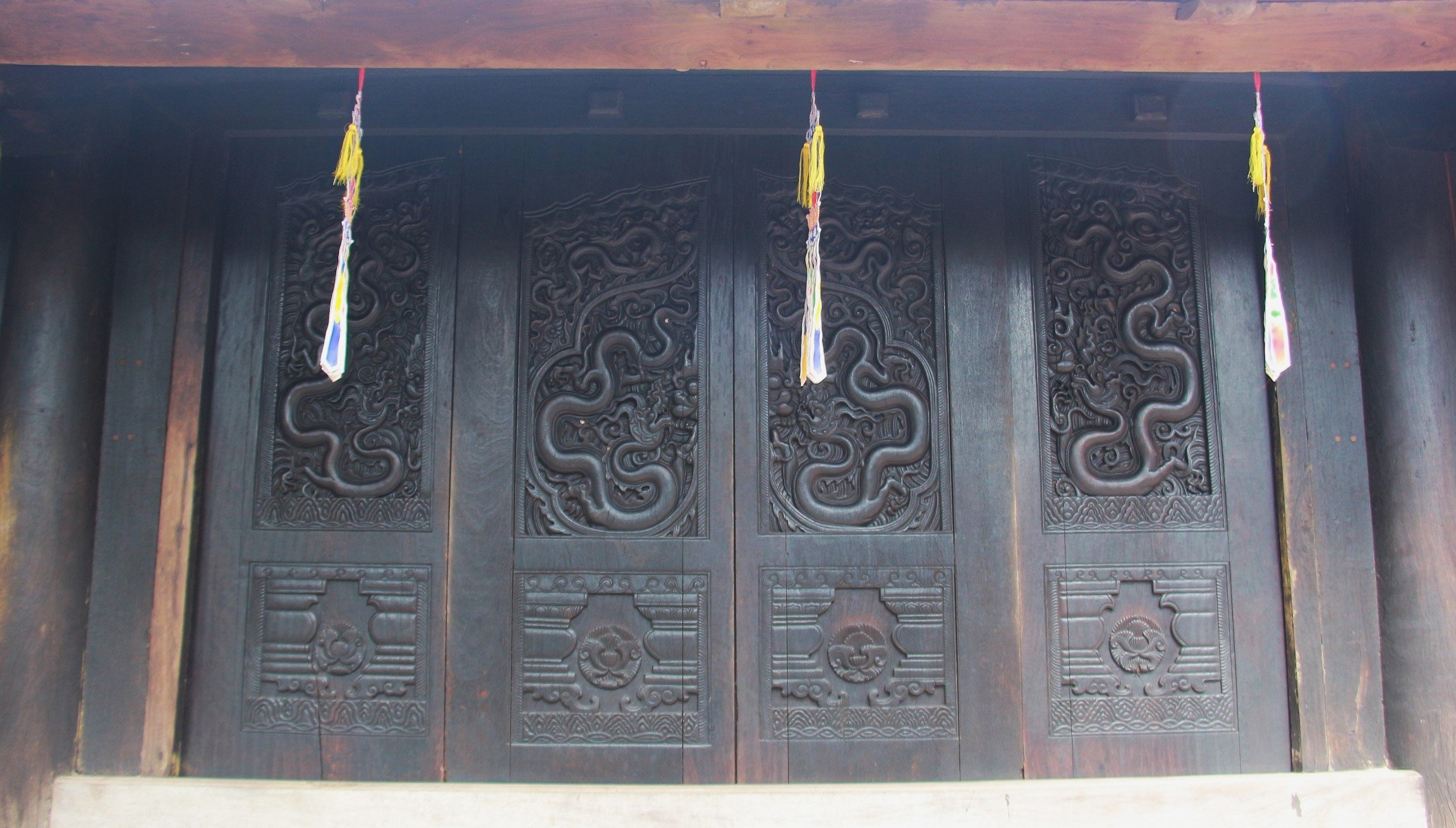
According to the Deputy Director of Nam Dinh Provincial Museum, the set of 4 doors at Pho Minh Pagoda is a version built at a 1:1 ratio compared to the original (the original set of doors; the 2 middle doors are on display at the National History Museum, the 2 side doors are at the Nam Dinh Provincial Museum).
According to historical records, Pho Minh Pagoda was built during the Ly Dynasty (around 1010 - 1225). When the Tran Dynasty came to power in 1262, the pagoda was renovated to be more spacious and majestic. During the 13th and 14th centuries, the pagoda was a place of practice for high-ranking officials and nobles of the Tran Dynasty.
Over the years, Pho Minh Pagoda still retains many architectural and artistic values. One of the ancient artifacts with great historical value is the set of four doors in the middle of the front hall of the pagoda.
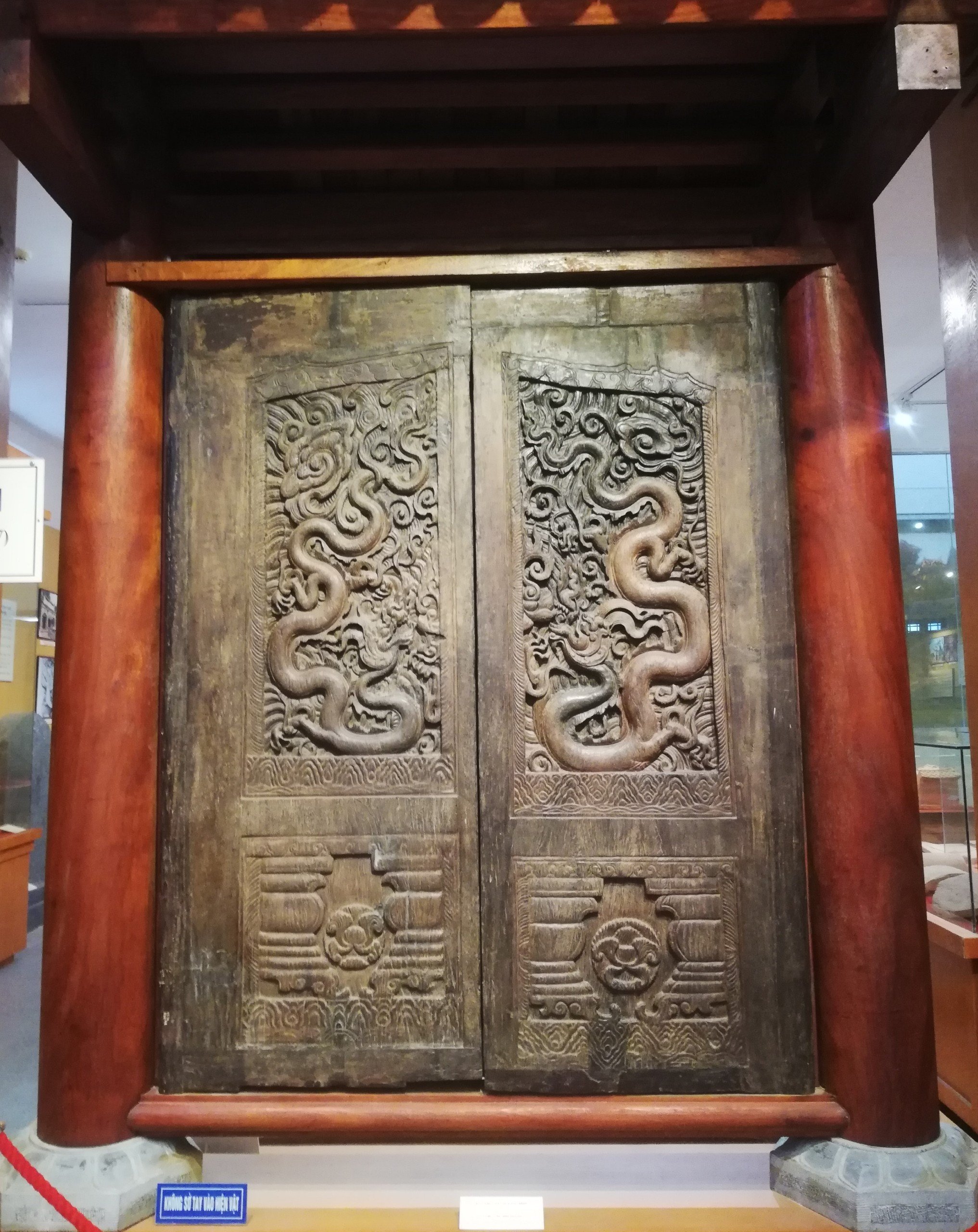
The two side doors are located at Nam Dinh Provincial Museum.
According to Mr. Hoang Van Cuong, Deputy Director of Nam Dinh Provincial Museum, currently, the set of 4 doors at Pho Minh Pagoda is a version built at a 1:1 ratio compared to the original; the original set of 4 doors including 2 middle doors are on display at the National History Museum, 2 side doors are placed at Nam Dinh Provincial Museum.
This set of doors is made of solid ironwood; each panel is 1.90 m high and 0.80 m wide. Each door has a revolving leg at both ends on the same inside side. For the door to operate, the upper revolving legs are mated with the revolving leg holes on the "door sill" and mortise and tenon with the lower beam. The lower revolving legs are mated with four bluestone mills.
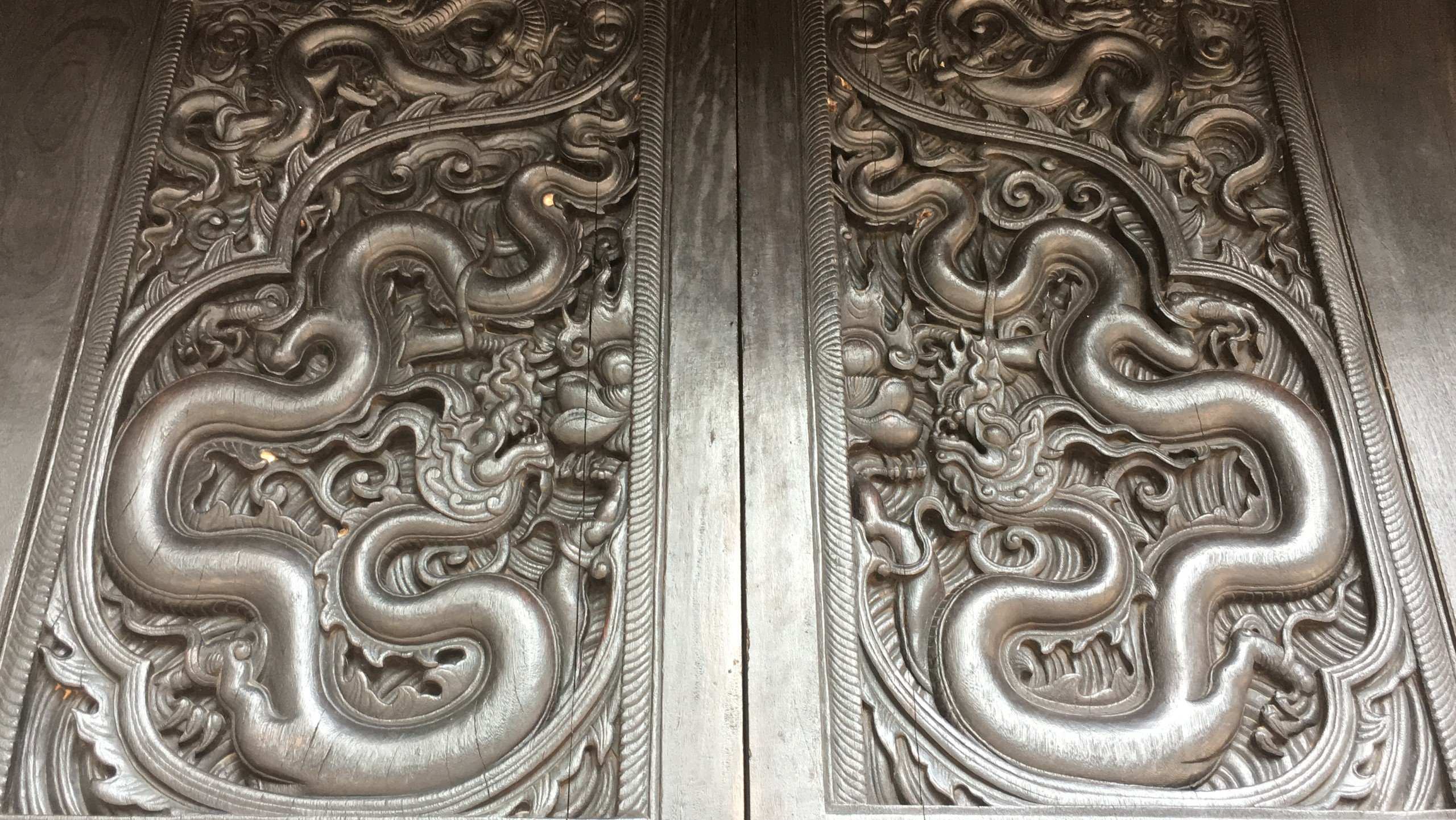
On each door there is a dragon image curled inside half of a Bodhi leaf. When the two middle doors are closed, they form a complete Bodhi leaf; and when the two side doors are closed, they are two symmetrical halves of Bodhi leaves on both sides.
On each of the four doors, there is a dragon decorated with a raised head and a winding body. The dragon's body is round, slender, without scales, with a long fire crest, and its tail is gathered towards the top of the Bodhi leaf. Of the four dragons, two large dragons have their mouths open, their manes and beards flying up to create clouds of fire, their fat, round bodies curled into smaller segments towards the tail. The dragons are in a coiled position in the shape of a Bodhi leaf, surrounded by a cloud of fire, with a blooming lotus in the middle. The lower part is carved with a symmetrically blooming chrysanthemum, the upper part is carved with Bodhi leaves, double lotus petals, and the lower row is carved with water waves.
On each door there is a dragon image curled inside half of a Bodhi leaf. When the two middle doors are closed, they form a complete Bodhi leaf, and when the two side doors are closed, they are two symmetrical halves of Bodhi leaves on both sides, giving the feeling of many dragon and Bodhi leaf images on the door set.
The Bodhi leaf was a very popular Buddhist symbol during the Ly and Tran dynasties. The dragon symbolized the king's power. Through this decorative theme, we see that royal power and divine power were blended together in a regime where Buddhism almost became the state religion and the king became the leader of a new Zen sect in Vietnamese Buddhism, the Truc Lam Zen sect.
Source link


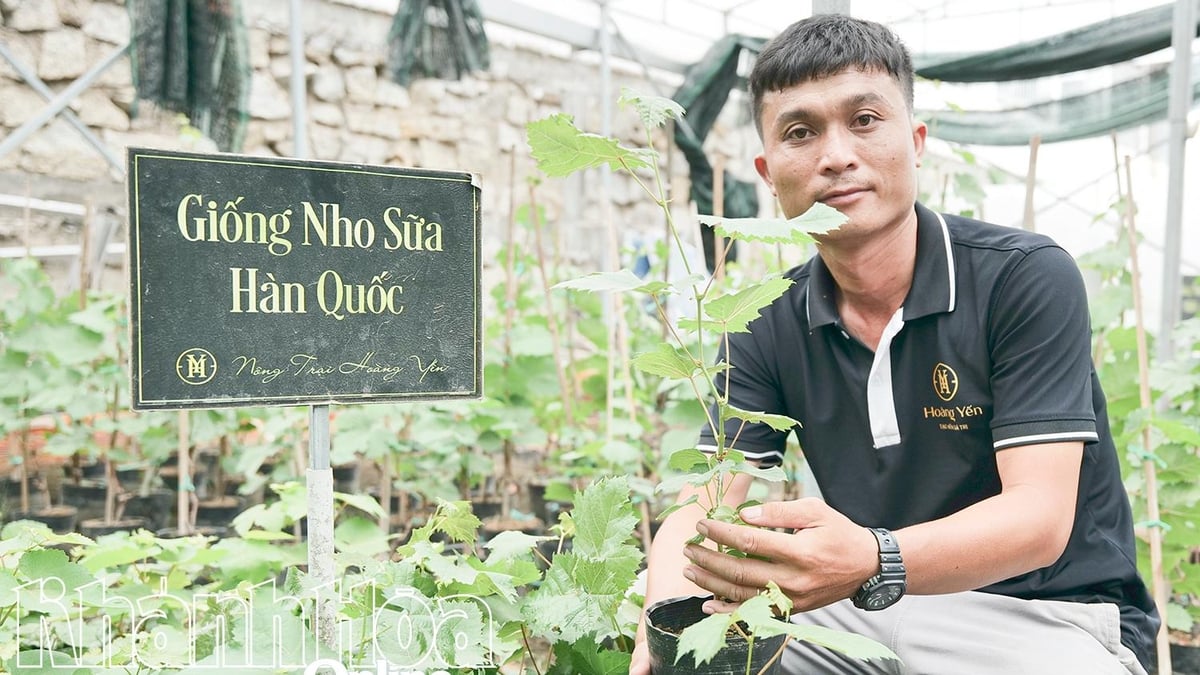


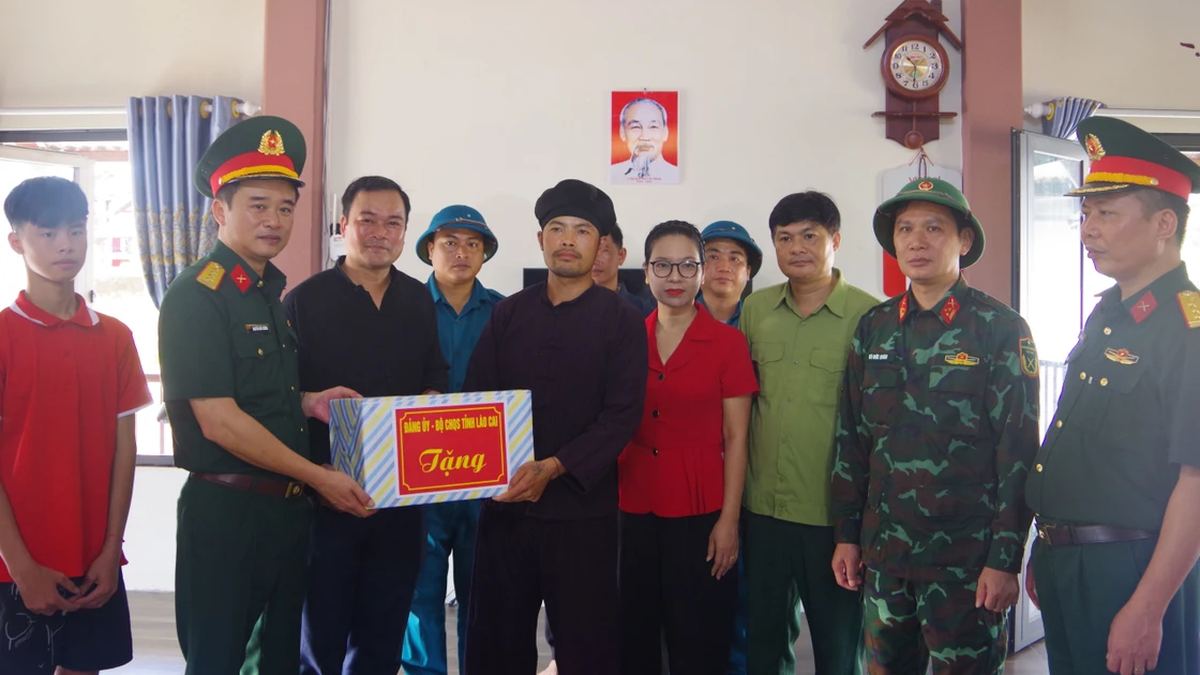
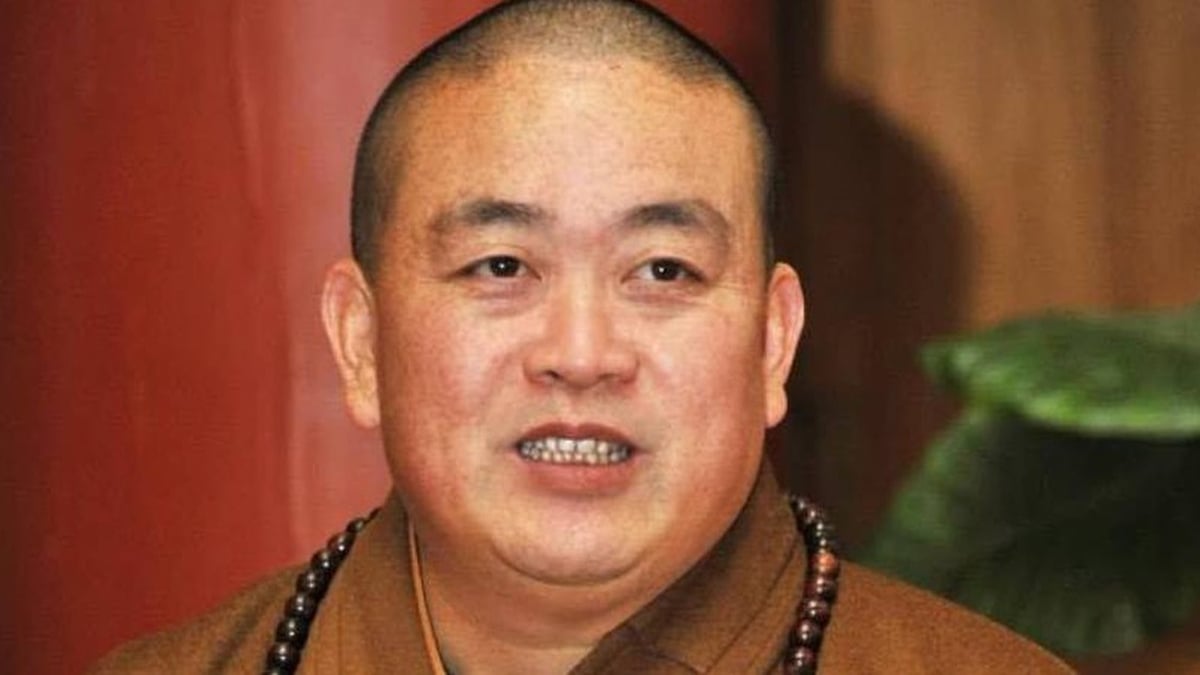

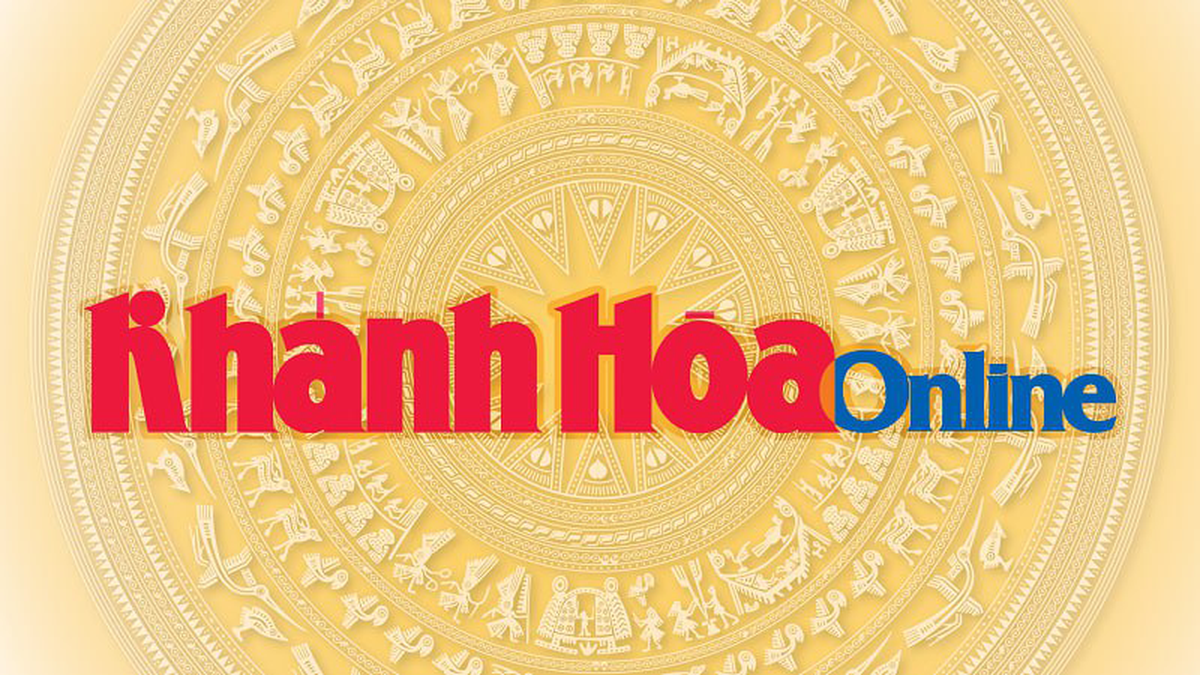

























































































Comment (0)